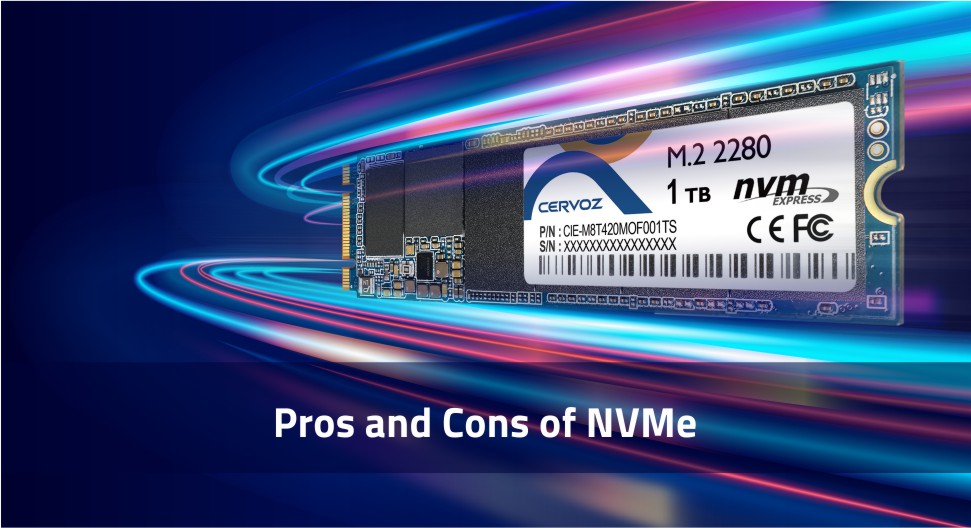- Company
- Press Center
- Pros and Cons of NVMe
BLOG
2021.10.13
Pros and Cons of NVMe
SHARE


NVM Express is the leading interface technology for the modern SSD. What makes NVMe such a powerful technology is that it enables SSDs to read and write at the full speed that they are capable of. Compared to its predecessor, the SATA, the latest PCIe Gen5 products enjoy up to 26 times the transmission speed.
Without getting too technical, we will explain why NVMe operates faster and better for large volumes of data. NVMe accesses non-volatile memory, as its name suggests, via the PCIe bus. Unlike SATA, PCIe connects directly to the application device, whereas SATA uses an intermediary. This design allows for lower latency and thus better data processing.
SATA

NVMe

The NVMe interface is also compatible with multiple form factors, which makes it ideal for many different application devices. Especially in servers where space is limited, an M.2 form factor would be ideal for the space constraint and the NVMe the optimal choice for processing server-volume data.
Of course, there are drawbacks to such a high level of performance. Namely, such fast operations can quickly lead to overheating and thus questionable reliability. This is really where, like most choices to be made in tech, customers must choose: high performance versus high reliability. Like we usually say with most products or technology, it really depends on the customer’s application needs.
For servers, cloud computing, or other high-volume processing needs, we would recommend NVMe interface. To address the issue of overheating, Cervoz offers a number of heat dissipation features and mechanisms. These firmware and hardware solutions ensure that users can take advantage of the speed of NVMe without sacrificing on reliability.



